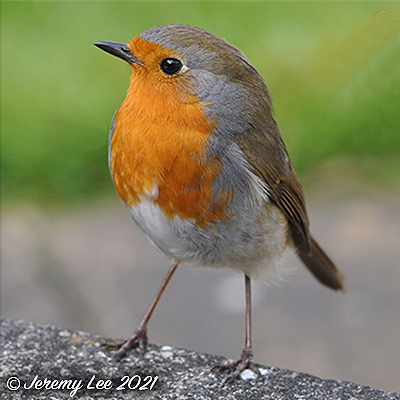
 |
|
Scientific Classifications explained » Amphibians » Ants » Aphids » Bees » Beetles » Birds » Bugs » Butterflies » Caterpillars » Damselflies » Dragonflies » Earwigs » Flies » Frog/Leafhoppers » Fungi » Galls » Grasshoppers » Harvestmen » Hoverflies » Lacewings » Ladybirds » Leaf Mines » Lichens » Mammals » Millipedes » Mosses » Moths » Sawflies » Slugs » Snails » Spiders » Trees & Shrubs » Wasps » Wild Flowers » Woodlice » Postboxes |
UK Nature > Birds > Erithacus rubecula

Scientific Name: Erithacus rubecula Common Name: Robin Erithacus rubecula, more commonly known as the Robin, measures approximately 14cm in length. The brown back and wings and the red face and breast distinguish it from any other UK species. Young Robins have speckly brown breasts. The commonest call heard is a loud and rapid 'tic-tic-tic' but their song, heard throughout the year, apart from a few weeks in mid-summer, is a melodious medley of high pitched trills and warbles. Insects, spiders and other small invertebrates are the main diet of the Robin, although small seeds and soft fruits are also eaten and all kinds of foods are taken from bird tables in winter. Robins have a special liking for live meal-worms and will sometimes take them from the hand. Their nest is a cup of leaves and moss, lined with hair and fine roots, built in dense vegetation or in a cavity. Common almost everywhere, they can be found in woods, parks, hedgerows and gardens. Few British gardens, even in towns, are without a robin. Strongly territorial for most of the year. |
|

https://www.uknature.co.uk is a website dedicated to showing the immense diversity of UK nature and wildlife. Our vast range of habitats, from lowland arable to snow covered mountains, from storm-ravaged coastlines to peaceful inland freshwater lakes and rivers, from dry, sandy heaths to deciduous and coniferous forests, all these habitats contribute to the abundance of UK nature. We have wild birds in huge numbers either residing or visiting our shores (597 recorded species as at July 2013) and we must also not forget the humble back garden with its grass lawns, flower beds filled with nectar rich flowers, shrubs and trees, all designed to attract huge numbers of insects such as bees, moths, butterflies and hoverflies; and finally the small ponds which provide safe havens for frogs, toads, newts and even slow worms and grass snakes. www.uknature.co.uk is the showcase for my personal passion, photographing uknature in all its glory. I sincerely hope you all enjoy the fruits of my labours. This site and all images contained therein is © Jeremy Lee 2004 - 2025. All Rights Reserved. Site design by Jeremy Lee. Site development & IT Support by Stuart Lee. |